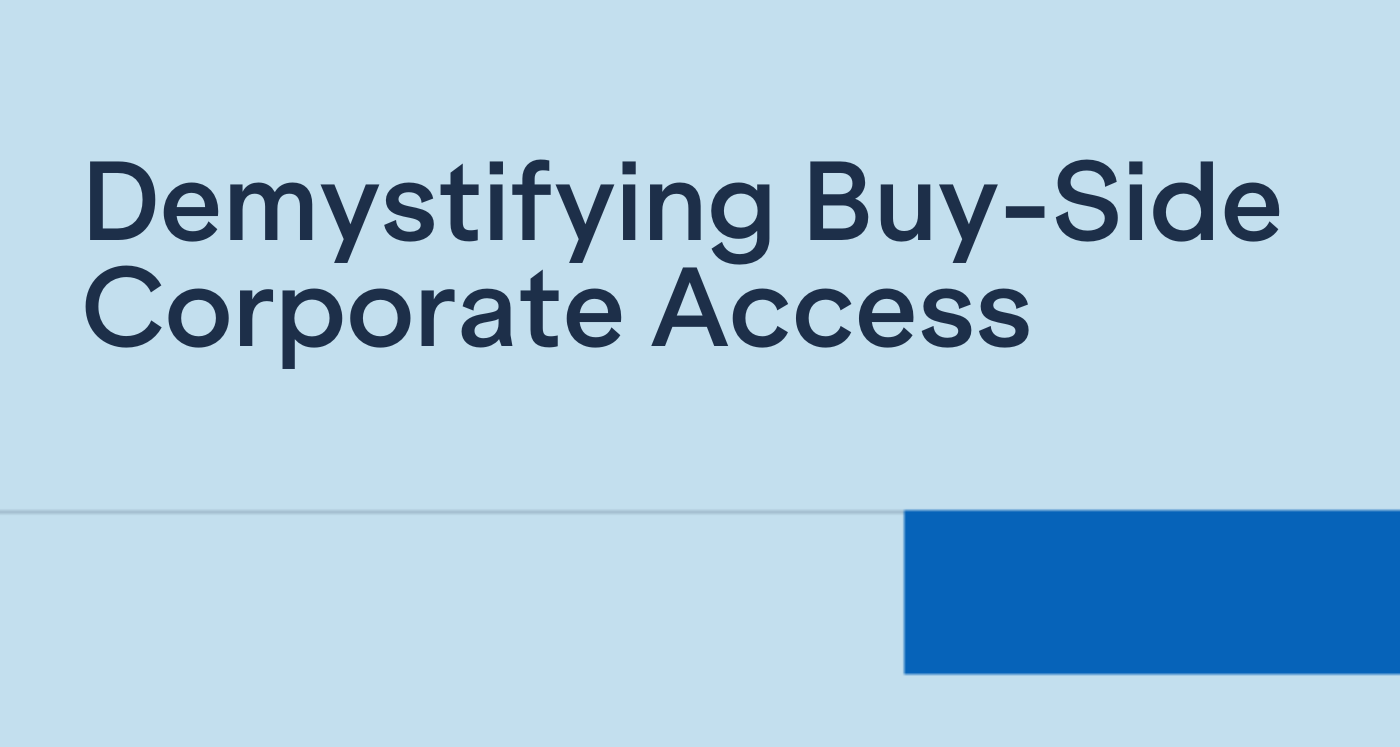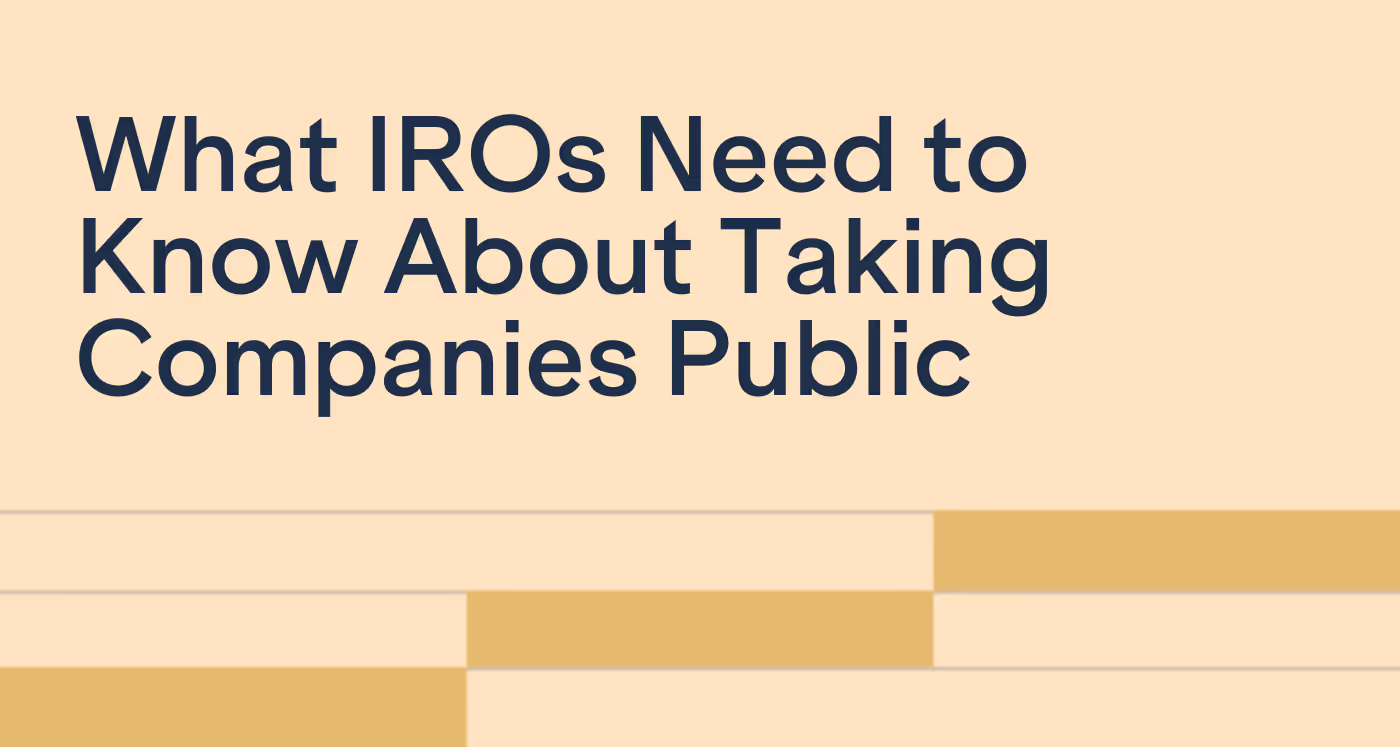
How to Build Effective Investor Targeting and Outreach Strategies for Small-Mid-Cap Companies
Learn how seasoned IR veterans are executing targeting strategies for small-mid-cap companies.

Identifying and understanding your shareholder base is critical when it comes to planning your investor relations strategy.
Last week, the Canadian Investor Relations Institute (CIRI) hosted a webinar featuring a panel of IR experts on the topic of ‘Identifying & Understanding Your Shareholder Base’, moderated by Yvette Lokker, President & CEO, CIRI.
Irwin Co-Founder & COO Mark Fasken joined IR professionals Camilla Bartosiewicz and Mike McAllister to discuss best practices for understanding your shareholder base.
Camilla Bartosiewicz is currently the Vice President, Investor Relations at Altus Group Ltd — a leading provider of software, data analytics, and advisory solutions to the global commercial real estate industry. Altus Group’s market cap is < $3 billion, and approximately 90 percent of their outstanding shares are held by institutional growth investors.
Mike McAllister is currently the Vice President, Investor Relations at Sierra Metals Inc — a diversified producer of various metals. They have a market cap of half a billion, with most of their shareholder base in North America. Currently, one-third of their shareholders are institutional owners, and they are looking to expand their institutional base with the right type of investors.
There are a number of different resources that you can leverage to gain a better understanding of your shareholder base. “It’s important to track every opportunity. No one source is the end-all and be-all for tracking your shareholders,” said Mike.
Mike outlined his shareholder monitoring strategy:
While Altus Group uses similar tactics, Camilla noted she also uses less traditional methods including verbal confirmations. “Verbal confirmations are always key because at the end of the day, you’ll never have real-time data, but a conversation is as close as it gets.”
When Camilla first started at Altus, they were subscribed to an IR tool where she would use the ownership tab, which was predominantly public filings data. As they started to evolve their shareholder base, they wanted more visibility, so they decided to implement a surveillance program, which provides a monthly list and detailed analysis of the make-up of their shareholder base. They also track short positions, paying close attention to any notable spikes/trends.
When Camilla first joined Altus, they weren't doing much in terms of tracking ownership, beyond what would have been pieced together during investor meetings. As the company began to go through a transitional period that resulted in a change in its shareholder base, it became apparent that they needed to move towards a more formal program. Surveillance became a foundational piece of their IR program, which created opportunities to engage directly with shareholders and build stronger relationships.
Similarly, when Mike first joined Sierra Metals, the company was missing critical data on their shareholders. They recently brought on a surveillance team and began receiving weekly surveillance reports, which helps him gain a deeper knowledge of his institutional shareholders outside of public reporting.
Mike leverages surveillance data to monitor movements in their shareholder base. When there is movement, he will reach out to investors and discuss their position change. “Often, it's not a reflection of the company, but simply the investor is rebalancing their portfolio.” Receiving feedback on why certain holders are changing positions is important for all IR teams to analyze and address.
Mike receives bi-weekly NOBO lists through Irwin. The data from these NOBO lists have helped Mike discover shareholders that have significant stakes in the company he didn't know about, including high net worth family offices.
“It's shocking. I see people take sizeable positions and I've never spoken to them. We’ve reached out to some of these people and we see their positions grow 2-3 fold. It’s a great way to find people you didn't know existed, build a relationship with them, and talk to them regularly. We’ve added long-term shareholders to our pocket. I think reaching out has given them more of a reason to stay invested.”
Mike also leverages NOBO data as a reference system to double-check the accuracy of the verbal confirmation from shareholders. “Sometimes, when speaking with shareholders, they won't be honest with you. When you get the NOBO list, you can see if they’ve dropped shares.”
Without NOBO lists, you don't have the complete picture of your shareholder base. To understand more about the importance of NOBO, learn more about why you should track your NOBO shareholders.
“It’s crucial to know your audience, understand who holds you, what their make-up is, and their expectations of the company. Investors are not all alike - knowing who they are helps to narrow in on what attracted them to the company. Finding those common themes effectively becomes a blueprint for the IR program,” said Camilla.
For Mike, it's important to know who their shareholders are because Sierra Metals is changing its targeting strategy. The company is transitioning away from retail holders, and is looking to engage with more institutional, long-term investors who understand the mining space, and will grow with the company through the next phase.
“It's important to understand who you have and who you want.”
Mike uses Irwin’s Peer Analysis and Fit Score when determining his targeting efforts. Irwin’s Peer Analysis allows you to monitor who’s buying/selling you and your peers, while the Fit Score algorithm analyzes data such as market cap, sector, geography, and peers to suggest investors that are the best fit.
“IR people are busy and wear many hats. You only have so much time for every aspect of your job, so any help you can get is terrific.”
It’s important to be effective in your outreach.
“It's all about maximizing time. We have an impression of who we want to attract and who we see as well suited for the company and our strategy. On the investor side, they have to meet fundamental criteria, including size, jurisdiction, sector, etc. You apply a lot of those filters when you’re screening.” said Camilla.
Determining the fit prior to meetings will not only save you time, but allow you to be more strategic in your approach.
“Ownership data helps with understanding who you are meeting. If they are a generalist fund that is more focused on the financials, I'm going to be bringing a different presentation to that meeting, than if I'm meeting with an analyst who is going to be more interested in the geology. It helps me to tailor my presentations, and it also helps me decide who I'm bringing to meetings” said Mike.
For Camilla, shareholder data helps her with figuring out who should be taking meetings (IRO or management?) as well as figuring out if it's a worthwhile account, or if it's an investor that holds a competitor and is in the educational stage.
“It gives you the first element of coming prepared to meetings and the knowledge base to maximize your time. It's about finding the right investors who are more likely to invest, and are more aligned with our strategy.”
Irwin has the most comprehensive and accurate shareholder intelligence on the market. Irwin offers three types of monitoring:
IROs typically overlook and underutilize NOBO data. Irwin's NOBO Solution enables issuers and advisors to identify and target retail investors, opaque institutions and family offices.
If you’re interested to learn how Mike McAllister and the team at Sierra Metals uses Irwin to leverage NOBO data and manage their investor relations program, read the case study here.
To find out more about the value of NOBO lists, click the button below.

Learn how seasoned IR veterans are executing targeting strategies for small-mid-cap companies.

Elizabeth Librizzi breaks down the secrets of buy-side corporate access to help investor relations professionals utilize buy-side firms.

What IROs Need to Know About Taking Companies Public: Insights from award winning investor relations thought leader Catherine Buan.